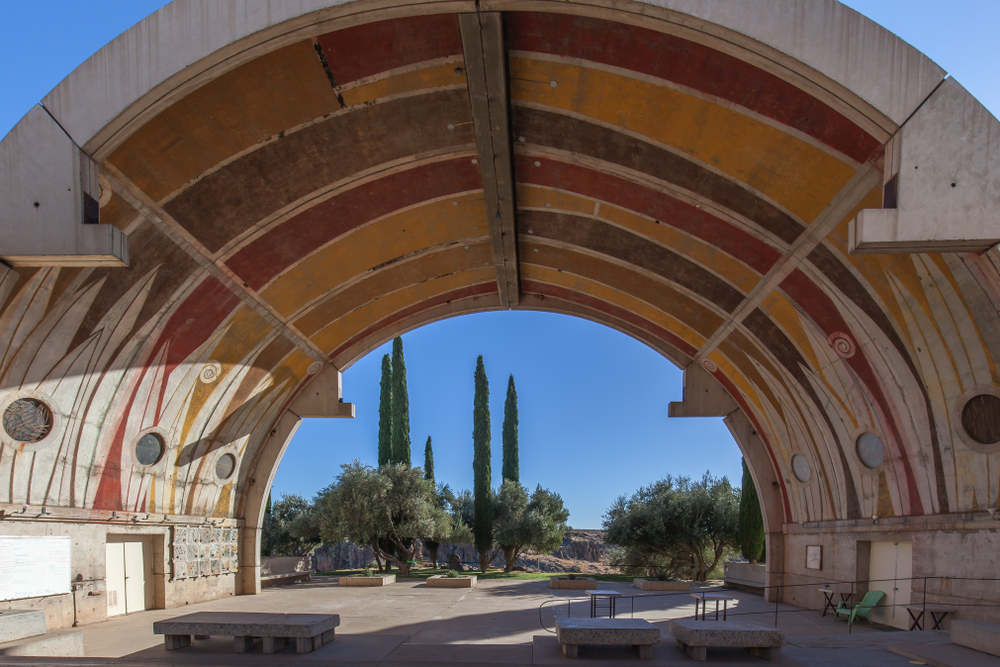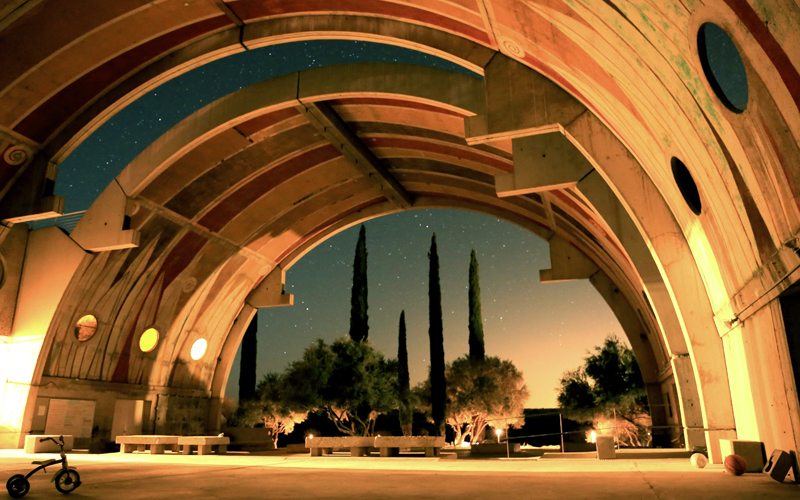Architecture has the power to influence people more than what it’s known for. The way we all know it to be is simply as a structure for human beings to reside in. However, it can be more than that. Architecture can promote sustainability and change the way the world works tremendously.
Arcosanti
Arcosanti is a bizarre city located an hour north of Phoenix, Arizona. The project started in 1970 and is only 5% complete. It was designed by late architect, Paolo Soleri and rests among Sonoran scrub and needled trees. Arcosanti is considered an early example of radical urban planning that enables the conservation of energy, land, and natural resources.

The Architecture
The architecture of this city was planned with sustainability in mind. Many structures point south for light and heat purposes. Its round shapes, ribbed vaults, and sweeping curves look like it’s from a sci-fi movie! There are no roads, and many structures point south for light and heat purposes. This city is also an example of how construction and passive solar energy concepts can create an environmentally responsible urban design.
The Idea
Arcosanti was built for efficiency. With the formatting of the city and the elimination of roads, everything’s a quick walk away! No need for cars or other pollution sources. The idea was to make it a “walking city.” This promotes the idea of energy efficiency and conservation. Combining sustainability with architectural design is an amazing way to secure the future of the planet. Concepts like these are elements that can change the world.

Samuel Borgese’s (founder of Aceneca) was an architecture student at the time of its construction who participated in the construction. His passion started with Paolo Soleri’s vision for implementing sustainability within architecture. There he learned how much impact architectural design can have on the world. He helped build the world’s first geodesic in that project, which inspired him to continue his journey in that field. From there, he traveled around the world, studying architecture and participating in projects that worked for the purpose of sustainability.
From Arcosanti to today, sustainable architecture has changed significantly. One of the newest examples of sustainable architecture being acted today is the city of Neom. This city is the modern-day representation of Soleri’s vision.
The City of Neom
Neom, also known as “the Line,” is a planned cross-border city in northwestern Saudi Arabia. It plans to incorporate smart city technologies to function as a self-sustaining city that can fully function on its own. It will have no roads or cars. Everything will be within walking distance of each other. The idea is to reduce one’s reliance on cars and build a zero-emissions city. Neom was announced in 2017 and is currently part of Saudi Arabia’s Vision 2030 drive to become less reliant on oil and diversify its economy. The area will be populated by more robots than people, and powered by solar panels and wind farms.

The city will be designed in a way where cars will not be needed. The 100-mile-long mega-city will consist of connected communities called city modules that will link the Red Sea coast with the northwest of Saudi Arabia. Everything people need will be within a five-minute walk from them. The architecture will be designed to be space-efficient and in close proximity to each other. Buildings will be carbon-positive and powered by clean energy. The idea of using architecture to make the world more sustainable and cleaner is fascinating.
The Line will be laid in 3 layers:
⦁ a surface layer for pedestrians, plus two
⦁ A subterranean layer for transportation
⦁ A subterranean layer for infrastructure.

According to Bin Salman, the design will preserve 95% of the region’s natural environment. Keeping in mind the environment with the design is what makes this concept attractive. At the rate we’re currently at, the future doesn’t seem too bright regarding pollution and global warming. That is why sustainability should be part of any architectural plan. By 2050, one billion people will have to relocate due to:
⦁ Rising levels of CO2
⦁ Rising sea levels
⦁ Polluted air
The Idea
The concept of this type of city is intriguing. If the world would put a greater focus on social responsibility and sustainability, both living beings and the planet itself would benefit substantially!
Searching for ways to change the world for the better is our role as human beings residing on this delicate planet. Whether it’s to feed the hungry or use architecture to promote sustainability, we can all do something to change the world. If you’re looking for a way to positively impact the world, then Aceneca would love to hear more about you!
